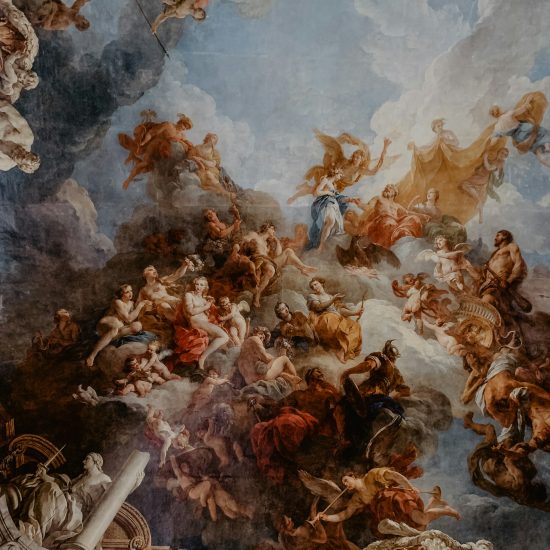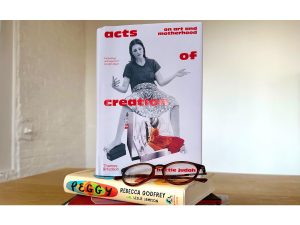Renaissance art, a movement that began in Italy during the 14th century, represents a profound cultural transformation that swept across Europe, leaving an indelible mark on the world of art and beyond. This era, often hailed as a rebirth of classical learning and wisdom, saw artists reaching unparalleled heights of creativity and innovation. Through the lens of Renaissance art, we explore the remarkable achievements of this period, highlighting key artists, iconic works, and the lasting legacy of this golden age of creativity.
The Dawn of Renaissance Art: A New Beginning
The Context of the Renaissance
The Renaissance, meaning “rebirth,” was a period of renewed interest in the classical art and philosophy of ancient Greece and Rome. This cultural revival was fueled by a spirit of humanism, which emphasized the potential of the individual and the pursuit of knowledge. The collapse of the Byzantine Empire in 1453 and the subsequent migration of Greek scholars to Italy brought with them a treasure trove of classical texts, which played a crucial role in igniting this intellectual revival.
Early Renaissance Innovators
The Early Renaissance, spanning roughly from 1400 to 1490, saw the emergence of key figures such as Giotto di Bondone, who is often credited with breaking away from the medieval Gothic style and introducing more naturalistic forms and techniques. His frescoes, particularly in the Scrovegni Chapel, showcased an unprecedented level of emotional depth and realism.
Another pivotal artist of this era was Masaccio, whose work in the Brancacci Chapel displayed a mastery of perspective and human anatomy. His use of chiaroscuro (the treatment of light and shadow) to create three-dimensional forms set the stage for future developments in painting.
The Role of Patronage
The flourishing of Renaissance art was significantly bolstered by the patronage of wealthy families and influential institutions. The Medici family of Florence, for example, were renowned patrons who supported artists such as Michelangelo, Leonardo da Vinci, and Sandro Botticelli. The Church also played a crucial role, commissioning grand works for cathedrals and churches, thereby spreading Renaissance ideals across Europe.
The Peak of Renaissance Art
Leonardo da Vinci: The Universal Genius
Leonardo da Vinci, often hailed as the quintessential Renaissance man, epitomized the era’s spirit of inquiry and creativity. His iconic works, such as the “Mona Lisa” and “The Last Supper,” are masterpieces of composition, technique, and psychological depth. Da Vinci’s relentless curiosity and meticulous studies of anatomy, light, and nature culminated in a body of work that continues to captivate audiences worldwide.
Michelangelo: The Divine Sculptor
Michelangelo Buonarroti, another towering figure of the High Renaissance, excelled in sculpture, painting, and architecture. His sculptures, such as “David” and “Pieta,” are celebrated for their expressive power and technical precision. Michelangelo’s frescoes on the ceiling of the Sistine Chapel, particularly “The Creation of Adam,” showcase his unparalleled ability to depict the human form in dynamic and emotionally resonant ways.
Raphael: The Master of Harmony
Raphael Sanzio, known for his serene and harmonious compositions, played a crucial role in the High Renaissance. His frescoes in the Vatican’s Raphael Rooms, especially “The School of Athens”, epitomize the Renaissance ideals of balance, clarity, and beauty. Raphael’s ability to blend classical elements with innovative techniques made him one of the most influential artists of his time.

Source: Flickr.com – The School of Athens
The Spread of Renaissance Art Beyond Italy
The Northern Renaissance
The Renaissance movement did not remain confined to Italy; it spread across Europe, adapting to local cultures and traditions. In the Northern Renaissance, artists like Jan van Eyck and Albrecht Dürer brought meticulous attention to detail and a mastery of oil painting techniques. Van Eyck’s “Arnolfini Portrait” and Dürer’s self-portraits and engravings are notable examples of how Renaissance ideals were interpreted in the north.
The French Renaissance
In France, the Renaissance was marked by the fusion of Italian styles with French Gothic traditions. The Château de Chambord, commissioned by King Francis I, exemplifies this blend with its classical Italian elements and medieval fortress features. French artists like Jean Clouet and François Clouet excelled in portraiture, capturing the likeness and personality of their subjects with remarkable precision.
The English Renaissance
The English Renaissance, though later in arrival, produced significant contributions, particularly in literature and theater. In visual arts, Hans Holbein the Younger, a German-born artist who became the court painter for Henry VIII, is best known for his detailed and realistic portraits of the Tudor court. Holbein’s works are celebrated for their exquisite detail and insight into the personalities of his sitters.
The Techniques and Innovations of Renaissance Art
Perspective and Realism
One of the hallmarks of Renaissance art is the development and application of linear perspective, a technique that creates the illusion of depth on a flat surface. Pioneered by artists like Filippo Brunelleschi and Leon Battista Alberti, perspective transformed the way space and form were represented, allowing for more realistic and proportionate compositions.
Use of Light and Shadow
The Renaissance saw significant advancements in the use of light and shadow, known as chiaroscuro and sfumato. Chiaroscuro involves the use of strong contrasts between light and dark to give the illusion of volume, as seen in the works of Caravaggio. Sfumato, a technique perfected by Leonardo da Vinci, involves the delicate blending of colors and tones to create a soft, almost smoky effect, adding to the lifelike quality of his paintings.
Advances in Sculpture and Architecture
Renaissance sculptors, inspired by classical antiquity, achieved unprecedented levels of realism and expression. Donatello’s bronze “David” and Michelangelo’s marble “David” exemplify the era’s sculptural innovation. In architecture, the use of symmetry, proportion, and geometry became central, with structures like the Florence Cathedral dome by Brunelleschi and St. Peter’s Basilica in Vatican City showcasing the Renaissance ideals of harmony and grandeur.

Source: Flickr.com – Michaelangelo’s David
The Legacy of Renaissance Art
Influence on Later Art Movements
The innovations of the Renaissance had a profound impact on subsequent art movements. The emphasis on naturalism, perspective, and human emotion influenced Baroque artists like Rembrandt and Caravaggio, who further developed these techniques. The Renaissance also laid the groundwork for the Neoclassical movement of the 18th century, which sought to revive the classical ideals of simplicity and symmetry.
Renaissance Art in Modern Times
Today, Renaissance art continues to inspire and captivate. Major museums around the world, such as the Louvre in Paris, the Uffizi Gallery in Florence, and the National Gallery in London, house extensive collections of Renaissance masterpieces. These works remain a testament to the enduring power of human creativity and the pursuit of beauty and knowledge.
Preserving the Heritage of Renaissance Art
Efforts to preserve and restore Renaissance art are ongoing, with modern technology playing a crucial role. Advanced imaging techniques and conservation methods help protect these priceless works from the ravages of time and environmental damage. Educational programs and exhibitions also ensure that new generations can appreciate and learn from the achievements of Renaissance artists.
Renaissance art represents a pinnacle of human achievement, embodying the spirit of exploration, innovation, and beauty. Its enduring influence and timeless appeal continue to inspire and educate, reminding us of the limitless potential of human creativity. As we marvel at the works of Leonardo, Michelangelo, Raphael, and their contemporaries, we are not only looking at the past but also celebrating a legacy that still shapes our cultural landscape today.
References
- Vasari, Giorgio. Lives of the Most Excellent Painters, Sculptors, and Architects. Translated by Gaston du C. De Vere. 1550.
- Hartt, Frederick. History of Italian Renaissance Art: Painting, Sculpture, Architecture. Prentice Hall, 2006.
- Kleiner, Fred S. Gardner’s Art through the Ages: The Western Perspective. Cengage Learning, 2016.
This article captures the essence of Renaissance art, providing a comprehensive overview of its origins, key figures, techniques, and lasting impact. Whether you are an art enthusiast or a casual reader, the story of Renaissance art offers a fascinating glimpse into one of history’s most vibrant and transformative periods.




